Fatigue is a common issue that affects workplace performance and safety. We will explore the causes and types of fatigue, as well as its consequences in the workplace.
Stats and Facts
- Fatigue can impair cognitive function and decision-making abilities,
- In Australia, industries such as transportation, healthcare, and mining are particularly affected by fatigue-related issues,
- Approximately 23% of workplace accidents in Australia are attributed to fatigue-related issues,
- Fatigue costs Australian businesses an estimated $7 billion in lost productivity annually,
- Implementing effective fatigue management programs has been found to decrease workplace accidents by up to 50%.
What is Fatigue?
Fatigue is a state of exhaustion resulting from prolonged periods of stress or overwork.
Fatigue can manifest in various forms including physical fatigue, mental fatigue, and emotional fatigue, each affecting an individual’s alertness, cognitive abilities, and overall well-being differently.
What are the Causes of Fatigue?
The causes of fatigue in the workplace can arise from a variety of factors such as long work hours, lack of rest breaks, physically demanding tasks, and poor workplace ergonomics.
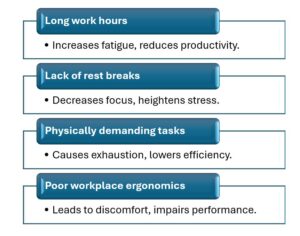
How Does Fatigue Affect Workplace Performance?
Fatigue significantly impairs workplace performance by diminishing:
- Concentration,
- Decision-making abilities, and
- Overall productivity,
Employees experiencing fatigue are more prone to making mistakes, overlooking critical details, and displaying slower reaction times, elevating the risk of workplace accidents and injuries.
What are the Signs of Fatigue in the Workplace?
Recognising the signs of fatigue in the workplace is crucial for early intervention and prevention, with common indicators including:
- Decreased alertness / tiredness,
- Memory lapse,
- Increased errors,
- Irritability / mood swings,
- Headaches / eye strain,
- Reduced performance, and
- Increase of incidents / accidents.
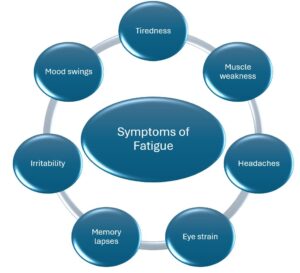
How Can Fatigue Impact Safety in the Workplace?
Fatigue poses a significant risk to workplace safety as it compromises employees’ ability to focus, make sound decisions, and react promptly to potential hazards, thereby increasing the likelihood of accidents, injuries, and absenteeism.

What are the Effects of Shift Work on Fatigue?
Shift work disrupts the body’s natural rhythm, leading to fatigue and increased health risks like obesity, heart disease, digestive issues, and mental health disorders. Chronic sleep deprivation and irregular shifts can worsen fatigue, creating ongoing well-being challenges for workers.
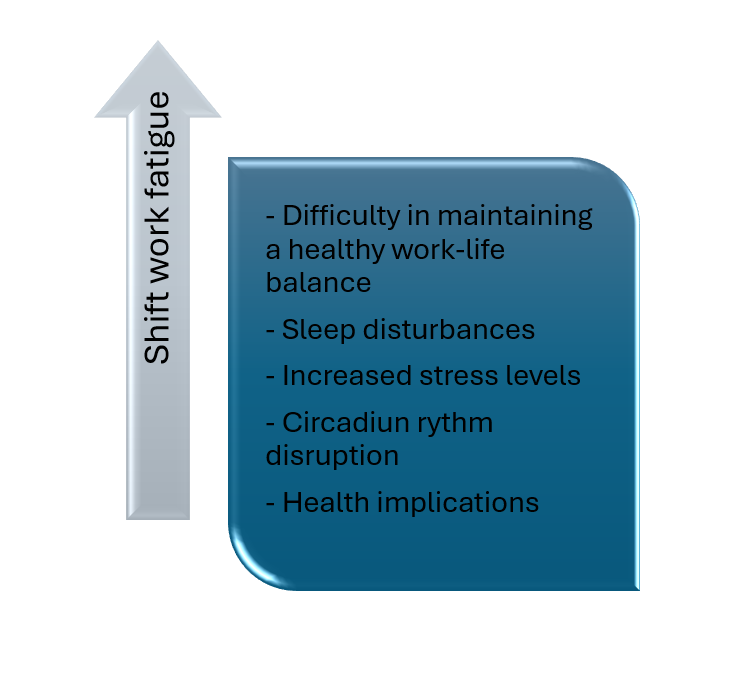
What Role Does Workplace Culture Play in Fatigue?
Workplace culture can either mitigate or exacerbate fatigue levels among employees, with a supportive and flexible organizational culture promoting:
- Employee well-being,
- Work-life balance, and
- Stress management.
Whilst a toxic or demanding cultures can lead to burnout, chronic fatigue and health implications.
 How Can Employers Address and Prevent Fatigue in the Workplace?
How Can Employers Address and Prevent Fatigue in the Workplace?
Employers can effectively address and prevent workplace fatigue by:
- Implementing fatigue management strategies,
- Fostering a culture of health and safety,
- Providing relevant training, and
- Complying with legal obligations.

What Are the Legal Obligations for Employers Regarding Fatigue in the Workplace?
Employers have legal obligations to address and prevent workplace fatigue as mandated by regulations such as the Work Health and Safety Act, Workplace Relations Act, and other statutory provisions that outline the responsibilities of employers in ensuring employee health, safety, and well-being.
Under these regulatory frameworks, employers are required to implement fatigue management programmes that include measures to:
- Identify,
- Assess, and
- Control fatigue risks in the workplace.
Compliance standards dictate that employers must provide adequate training to employees on recognising signs of fatigue, managing work schedules, and promoting rest breaks.
FAQ’S
What is fatigue?
Fatigue refers to physical, emotional or mental exhaustion caused by factors such as:
- Stress,
- Overwork, and / or
- Lack of sleep.
What are the primary causes of fatigue in the workplace in Australia?
Fatigue can be caused by various factors, including:
- Long working hours,
- Irregular shift patterns,
- Lack of breaks,
- High stress levels,
- Physical and mental health issues, and
- Demanding job tasks.
What can employers do to address and prevent fatigue in the workplace in Australia?
Employers have a legal obligation to ensure the health and safety of their employees, including addressing fatigue. Some measures they can take include:
- Implementing reasonable work hours,
- Providing adequate breaks and rest periods, and
- Promoting a healthy work-life balance.
Sources and Resources
- WorkWell Toolkit: Fatigue | WorkSafe Victoria: This resource provides insights into the impact of fatigue in the workplace, including its effects on error rates, accident likelihood, and productivity costs to the Australian economy.
- Fatigue – WorkSafe Queensland: This resource explains the risks and effects of fatigue in the workplace, stressing the importance of managing factors like work schedules and job demands to ensure worker safety and productivity.


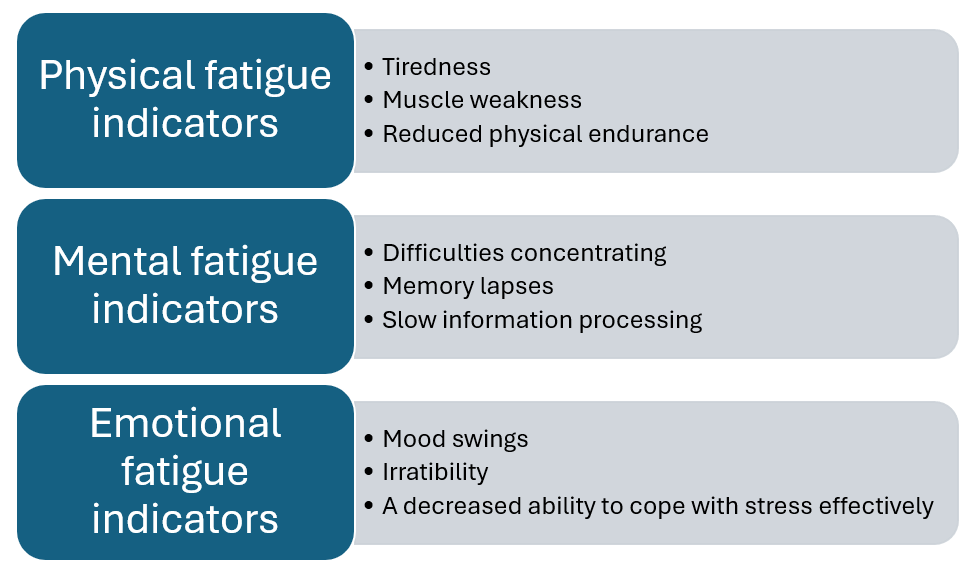
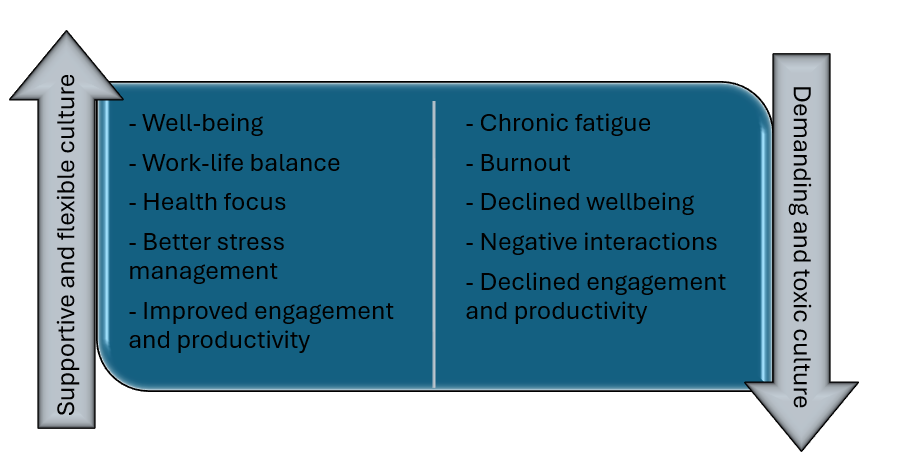 How Can Employers Address and Prevent Fatigue in the Workplace?
How Can Employers Address and Prevent Fatigue in the Workplace?